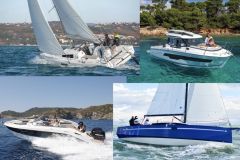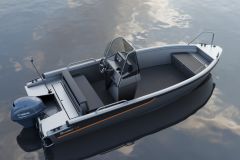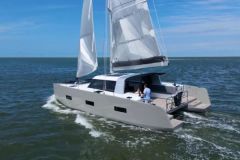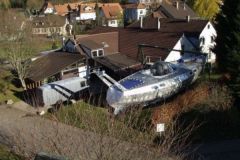It's not often that you see sailboats as far off the beaten track as this Mirabelle 16. Its architect, Eric Prang, designed it for an industrialist from Lorraine. His aim was to create a yacht with the least amount of gitard possible, and with an extraordinary living volume.
An aluminum scow
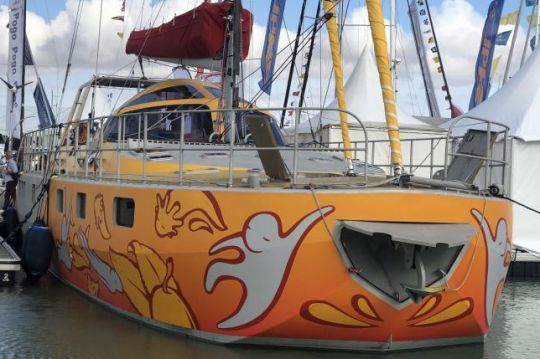
The Mirabelle 16, named after the emblematic fruit of Lorraine, is an aluminum sailboat with a scow bow. It's hard to describe the look from the pontoon. This nearly 16 m sailboat is 6 m wide from start to finish. It looks more like a barge than a cruiser racer! Below the waterline, 2 keels bring the draft up to 1.80 m, and 2 rudders are connected to hydraulic steering. Weighing in at 23 tons, it's not clear that the scow design is very relevant... Indeed, this type of hull requires very light sailboats to be efficient.
A bridge over a cabin
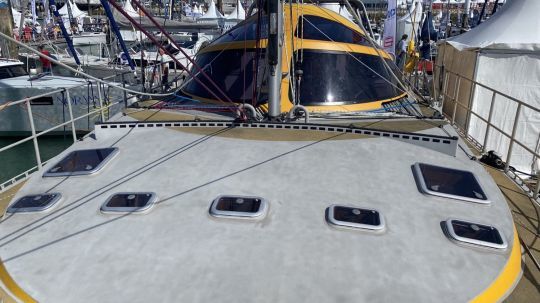
The very high freeboard of around 2 m places the deck very high up. There's no doubt that you can dominate the situation from the helm! But this height doesn't make arriving at the pontoon any easier. Access to the cockpit is via two staircases - not ladders, but staircases! - from the transom. The cockpit is protected by a large dog house, under which the navigation station is located. The first thing you'll notice about this boat is the watchstand, which must be comfortable in cold seas, but unbearable as soon as the sun beats down on the plexiglass.
Sober and efficient
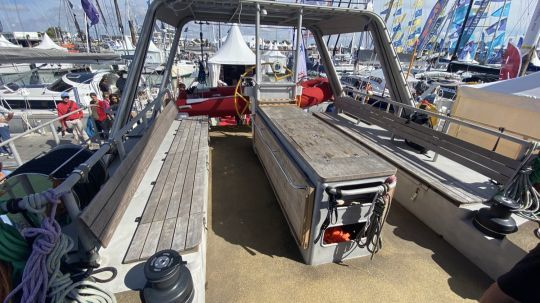
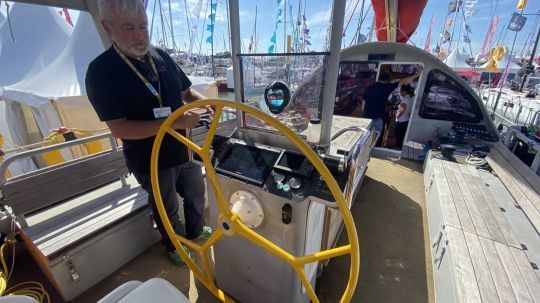
This all-aluminum sailboat makes no secret of its rugged, rough-hewn appearance. There's no room here for frills. The cockpit benches are simple slats, while the rest is covered with an industrial-style non-slip surface. A stroll around the deck is an improbable experience, so wide is it. The huge foredeck gives access to the anchor locker and sail locker.
In addition to electric winches, the Mirabelle 16 uses compressed air for maneuvering. Along the planks, which also act as stiffeners, tubes distribute compressed air on board. This is used to operate the davit and its pneumatic door, which lifts the bow to let the anchor through. Compared with hydraulics, compressed air is easy to maintain and doesn't interfere in the event of a leak. Another network, keel cooling, which also runs through tubes under the waterline, cools on-board equipment such as generators and engines.
Volume to spare
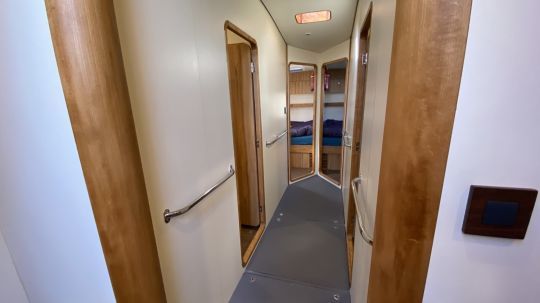
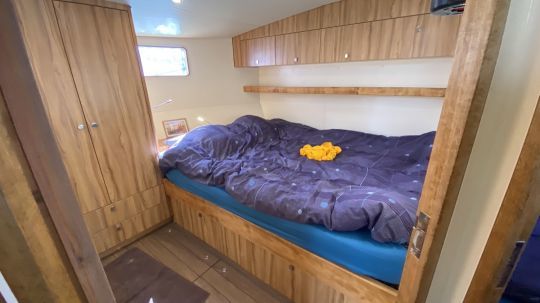
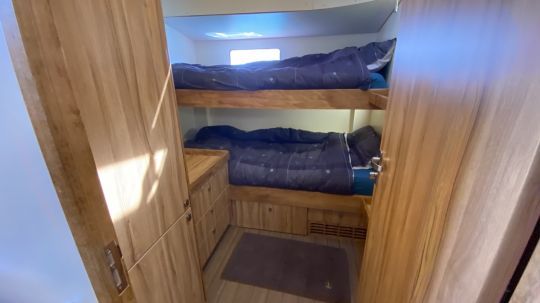
Below this huge deck are 4 double cabins and 4 washrooms. All are symmetrically distributed forward of the companionway. Moving aft, we pass the engines. These are electrically propelled, with 2 x 45 kW supported by 2 generators, each producing 50 kW. With the large lithium battery pack, the boat is completely self-sufficient.
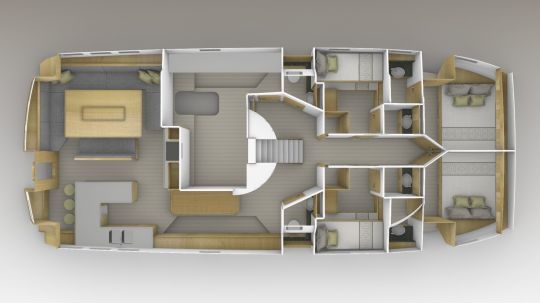
A welcoming square
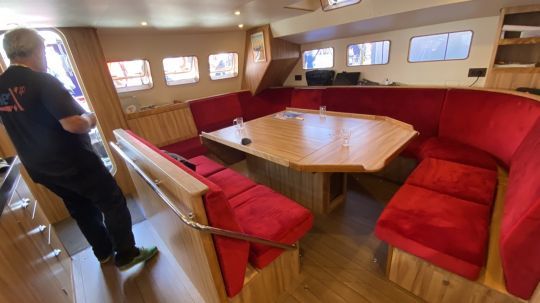
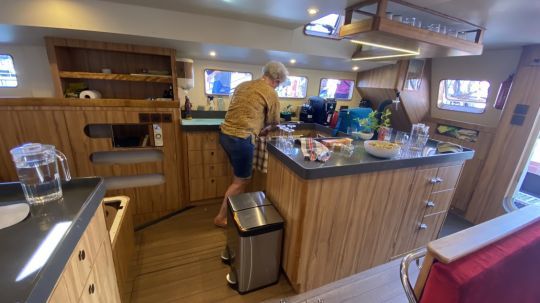
The highlight of the show is the saloon at the very rear of the boat, with its huge galley. This saloon opens directly onto the aft skirt, with a real door large enough to avoid having to bend down.
Architectural success or delirium?
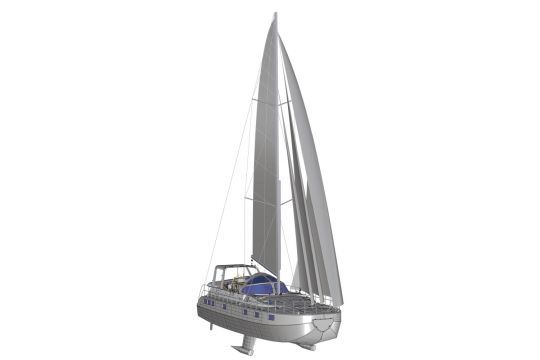
At the end of the visit, it's hard to know whether the Mirabelle is a success or not? Its designer, Eric Prang, had already presented the Mirabelle to us a few years ago an atypical sailboat with the AmerX40 . He's back at it again with the Mirabelle 16. But does it meet the expectations of certain yachtsmen? Are they looking for a flat-bottomed boat? Is comfort so much more important than looks? The market will decide whether the Mirabelle 16 remains a prototype, or whether a series will follow.





